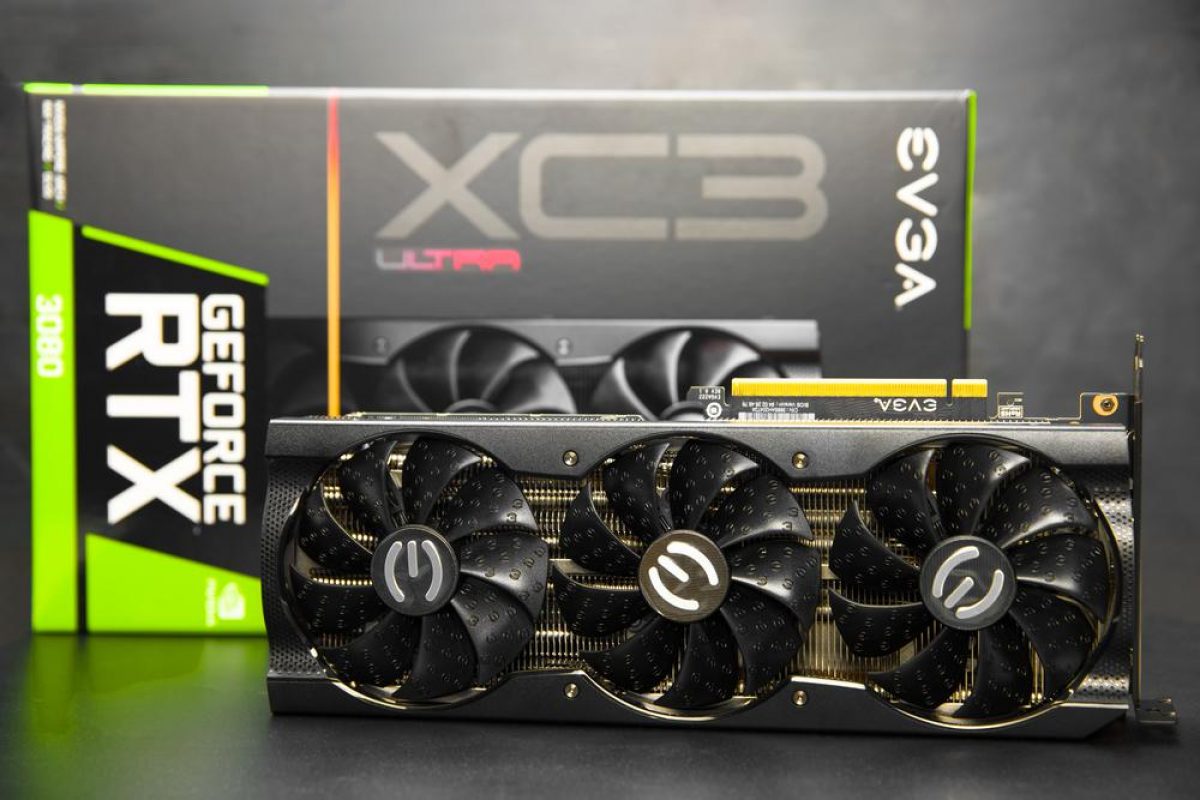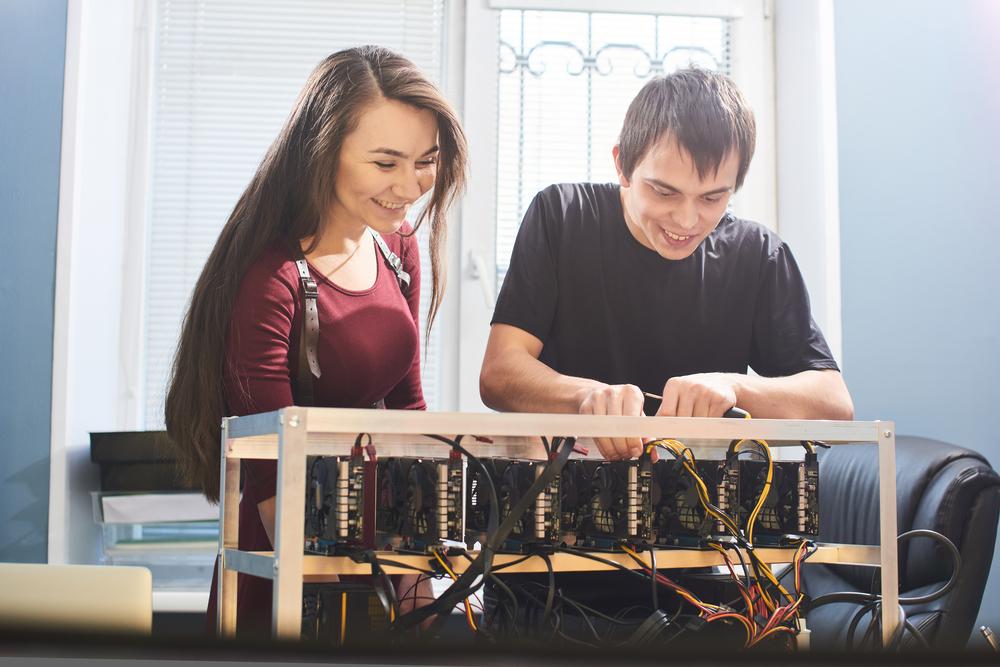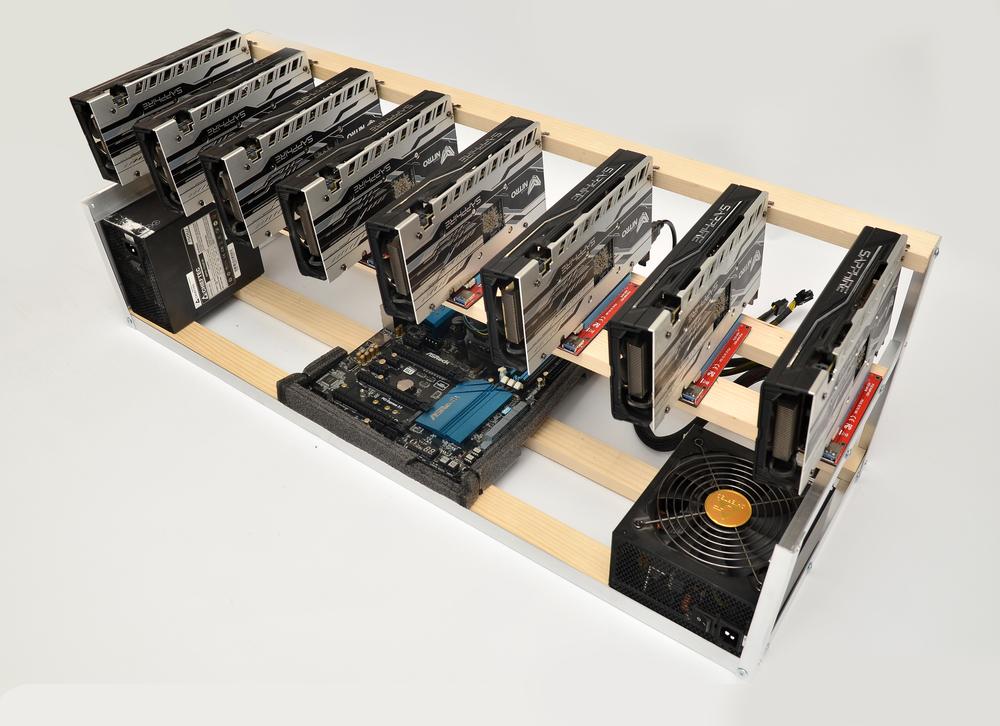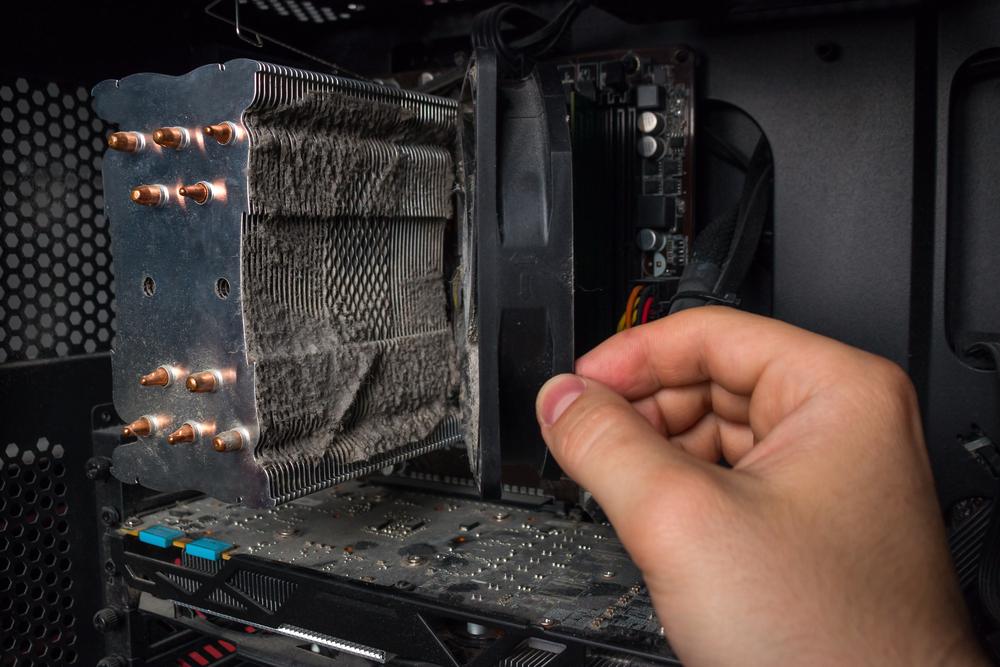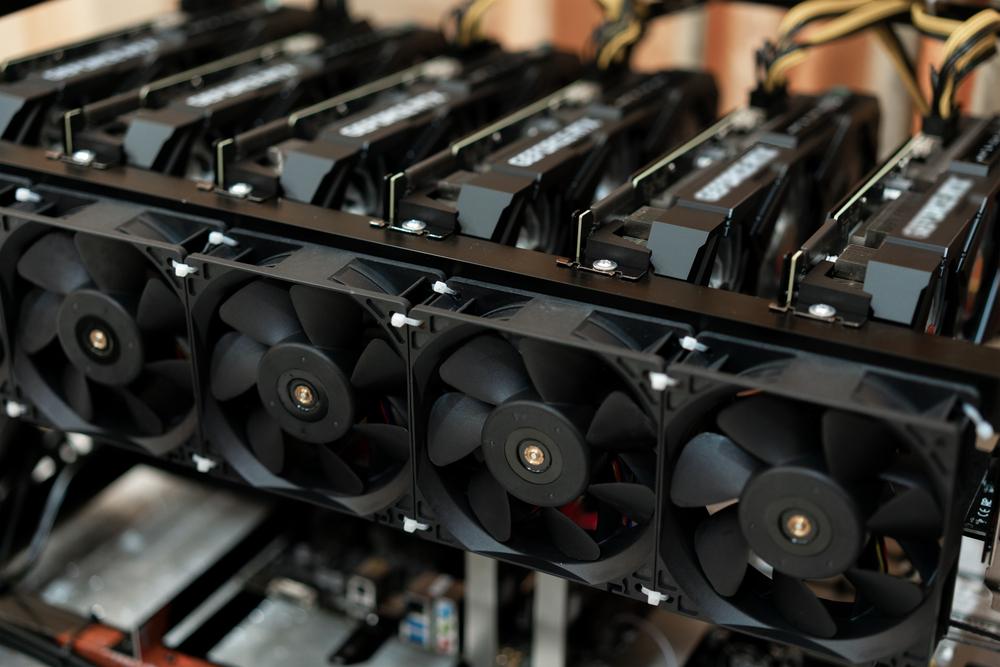The world of cryptocurrency mining is in a constant state of flux. With the recent surge in Bitcoin’s price, reaching a high of $73,000 just ahead of the halving event, many are anticipating a bull market on the horizon. This has led to a renewed interest in mining, and with it, a question that plagues new and existing miners alike: are second-hand GPUs good enough for mining in this market?
Traditionally, cryptocurrency mining has relied heavily on the processing power of Graphics Processing Units (GPUs). These powerful cards are adept at handling the complex calculations required to solve cryptographic puzzles and validate transactions on a blockchain network. However, the recent surge in cryptocurrency popularity has created a perfect storm. The ever-increasing demand for powerful GPUs, coupled with global chip shortages, has caused a significant price hike and dwindling stock of new graphics cards.
This scarcity has driven many miners to explore the secondary market, turning their attention to second-hand GPUs. But is this a wise decision, especially considering the potential bull run? This article will delve into the advantages and disadvantages of using second-hand GPUs for mining in 2024, offering a balanced perspective to help you make an informed choice.
Key Takeaways
- Second-hand GPUs from the Nvidia RTX 20/30 series and AMD 6000 series offer a compelling option for budget-conscious miners.
- These cards provide a good balance of affordability, performance, and efficiency for mining popular cryptocurrencies.
- The readily available used market allows you to start mining sooner and capitalize on potential market fluctuations.
- Lower initial investment with used GPUs can lead to a faster return on investment (ROI), especially in a bull market.
- Remember to prioritize responsible buying practices and factor in your individual needs and budget when choosing a second-hand GPU.
Comparison Table: New vs. Used GPUs for Mining
Feature | New GPU | Used GPU (RTX 20/30 Series, RX 6000 Series) |
|---|---|---|
| Price | Higher | Significantly Lower |
| Availability | May have wait times | Readily Available |
| Performance | Top-of-the-line | Excellent for established algorithms |
| Initial Investment | Higher | Lower, leading to faster ROI |
| Risk | Lower | Higher, requires careful research and buying practices |
The Allure of Second-Hand GPUs: Cost Savings and Availability
The primary appeal of second-hand GPUs lies in their significantly lower price point compared to their brand new counterparts. This cost saving can be substantial, allowing you to potentially build a mining rig at a fraction of the price. In a bull market, where mining profitability is expected to rise, these initial savings can translate to a much faster return on investment (ROI).
Furthermore, with the scarcity of new GPUs plaguing the market, second-hand options offer a readily available pool of hardware. This can be especially attractive for miners who are eager to jump in and start mining as soon as possible.
Beyond Cost: Performance Considerations
While cost is a major factor, it’s crucial to remember that not all GPUs are created equal. The suitability of a second-hand GPU for mining depends heavily on the specific model and generation. Certain older generation GPUs, while not the latest and greatest, may still be quite efficient for mining specific coins that utilize algorithms they are well-suited for.
To make an informed decision, it’s important to research the performance and profitability of different GPU models, both new and used. Look for benchmarks that compare hashing power (the rate at which a GPU can solve mining calculations) and energy consumption between various models. This will help you identify used GPUs that offer a good balance of affordability and mining efficiency.
Market Watch: Altcoin Prices on the Rise? (as of March 15, 2024)
While Bitcoin and Ethereum continue to dominate the headlines, the altcoin market is simmering with potential. Here’s a quick snapshot of some interesting movers and shakers:
- Aeternity (AE): Currently priced at $0.046, AE has seen some recent volatility. Keep an eye on this project focused on secure and scalable blockchain solutions.
- Ergo (ERG): ERG, sitting at $2.15, is a privacy-focused platform attracting attention.
- Clore.ai (CLORE): Clore.ai (CLORE) is hovering around $0.33, could this AI-powered data network be poised for a breakout?
- Flux (FLUX): Priced at $1.29, Flux (FLUX) offers cloud computing services on the blockchain.
- Ravencoin (RVN): Ravencoin (RVN) is currently trading at $0.029. This asset-focused blockchain could be worth watching.
- Neurai (XNA): Neurai (XNA) sits at $0.003. This project aims to bridge the gap between artificial intelligence and blockchain technology.
Remember, this is not financial advice. Always conduct your own research before investing in any cryptocurrency. Below, you’ll find a more detailed look at the current prices for these altcoins.
The Other Side of the Coin: Risks and Drawbacks
While the potential benefits of using second-hand GPUs are undeniable, there are also inherent risks and drawbacks to consider. One major concern is the reduced lifespan of a used GPU. Mining is a demanding task that puts a strain on a graphics card. A second-hand GPU that has already been used for mining may have a shorter lifespan compared to a brand new one.
Another significant drawback is the lack of warranty coverage. Most manufacturers will not honor warranties on used GPUs, leaving you responsible for any repairs or replacements that might be needed.
Performance degradation is another potential issue. Second-hand GPUs may have been overclocked or undervolted by previous owners in an attempt to squeeze out more performance. This can lead to instability or reduced efficiency when used for mining.
There’s also the risk of encountering hidden defects. When buying a used GPU, it’s crucial to inspect it thoroughly and stress test it before finalizing the purchase. Look for signs of physical damage, excessive dust buildup, or overheating issues.
Finally, the ever-volatile nature of cryptocurrency markets cannot be ignored. Even with a potential bull run on the horizon, there’s always the chance of a price drop. This could significantly impact your mining profitability, especially if you’ve invested heavily in used GPUs.
Advantages of Using Specific Second-Hand GPUs (20/30 Series Nvidia & 6000 Series AMD) for Mining
Let’s face it, building a mining rig with brand new GPUs can be a daunting task, especially in the current market. Here’s where specific second-hand Nvidia RTX 20/30 series and AMD 6000 series GPUs offer some compelling advantages for budget-minded miners:
1. Sweet Spot for Affordability and Performance:
You don’t need the absolute top-of-the-line model to get started. These mid-range cards offer a fantastic balance between affordability and mining efficiency for popular algorithms like Ethash (used for Ethereum). This translates to a lower initial investment, allowing you to:
- Reach Break-Even Faster: With a lower upfront cost, you can potentially reach your break-even point quicker and start seeing profits sooner, especially if a bull market materializes.
- Maximize ROI: Every dollar saved on the GPU translates to more profit down the line. Profitability calculators can help you compare used models and identify those with the best return on investment (ROI) for your mining goals.
2. Readily Available to Start Mining Now:
Forget the frustration of waiting months for new GPUs to come back in stock. The used market offers a vast pool of readily available RTX 20/30 series and 6000 series cards. This allows you to:
- Capitalize on Market Fluctuations: Don’t miss out on potential mining opportunities while waiting for new hardware. Jump in quickly with a used GPU and start earning sooner.
- Be More Flexible: As mining profitability fluctuates, you can easily adjust your rig by buying or selling used cards without a significant financial commitment compared to new models.
3. Proven Performance for Established Algorithms:
While cutting-edge technology is always exciting, these tried-and-true RTX 20/30 series and 6000 series GPUs are known for efficiently mining popular coins like Ethereum. They offer:
- Reliable Hash Rates: You can find extensive data and benchmarks online for these cards, allowing you to accurately predict their mining performance for specific algorithms.
- Strong Community Support: A large and active community of miners using these cards means you’ll find plenty of online resources, troubleshooting guides, and optimization tips.
4. Potential for Lower Power Consumption:
Some models within the 20/30 series Nvidia and 6000 series AMD are known for their improved power efficiency compared to older generations. This translates to:
- Reduced Operating Costs: Especially in a potential bull market with rising electricity costs, lower power consumption can significantly impact your overall mining profitability.
- Environmentally Friendly Approach (Sort Of): While mining has an environmental footprint, reusing existing hardware reduces the demand for new electronics production.
Remember: The best second-hand GPU for you depends on your specific mining goals and budget. Conduct thorough research, prioritize responsible buying practices, and factor in your individual needs before making a purchase.

Factors to Consider When Choosing a Second-Hand RTX 20/30 Series or AMD 6000 Series GPU for Mining
Here’s a breakdown of key factors to consider specifically when buying a second-hand Nvidia RTX 20/30 series or AMD 6000 series GPU for mining:
1. Model and Algorithm Compatibility:
- Research Hash Rates: Focus on models known for efficient mining of your target cryptocurrency. Look up hash rates for different algorithms (e.g., Ethash for Ethereum) on reputable websites like whattomine.com or hashrate.no . This will help you shortlist models that deliver the best performance for your chosen coin.
- Consider Newer vs. Older Within Series: While the latest 30 series Nvidia cards boast the highest hash rates, they’ll also be pricier on the second-hand market. RTX 20 series cards offer a good balance of affordability and performance, especially for mining Ethereum. For AMD, the 6700 XT is a strong contender, but the 6600 XT might be a more budget-friendly option with slightly lower hash rates.
2. Seller Reputation and Transparency:
- Trustworthy Sources: Purchase from reputable online marketplaces with buyer protection policies, like eBay or dedicated hardware forums.
- Clear Descriptions and Communication: Look for sellers who provide detailed descriptions of the GPU’s condition, including clear photos, previous usage (mining or gaming), and any modifications (overclocking). Don’t hesitate to ask questions for clarification.
3. Price vs. Performance & ROI:
- Use Profitability Calculators: Factor in the used GPU’s price, estimated hash rate, and your electricity costs using online calculators like whattomine.com or nicehash profitability calculator. This will help you determine which model offers the best return on investment (ROI) for your mining setup.
- Target the Sweet Spot: Don’t chase the absolute highest hash rate unless you have a large budget. Aim for a good balance between affordability and performance that fits your ROI goals.
4. Cooling Efficiency for Used GPUs:
- Inspect Cooling System: Since these are used cards, check for functional fans, clear dust buildup from heatsinks, and ensure they spin freely. Consider replacing thermal paste for improved heat transfer and performance.
- Prioritize Good Airflow: Invest in additional case fans if needed to create optimal airflow within your mining rig. This will help keep your GPUs cool and extend their lifespan.
5. Power Consumption and Operating Costs:
- Energy Efficiency Matters: In a potential bull market with rising electricity costs, prioritize GPUs known for lower power consumption (TDP). This will help you keep your operating expenses under control. The AMD 6000 series generally offers better power efficiency compared to some Nvidia counterparts.
By carefully considering these factors, you’ll be well-equipped to choose a reliable second-hand RTX 20/30 series or AMD 6000 series GPU for your mining needs. Remember, conducting thorough research, prioritizing responsible buying practices, and understanding your individual needs are key to a successful mining operation.
Bonus Section: Mastering the Second-Hand Market for Mining GPUs (20 Series, 30 Series & 6000 Series)
Finding Reliable Second-Hand GPUs:
- Target the Right Marketplaces: Look beyond general used item platforms. Explore online marketplaces frequented by miners and tech enthusiasts, such as HardwareSwap (US) or Overclockers UK (UK). These communities often have dedicated sections for GPUs, with sellers who understand mining needs.
- Join Mining Forums and Communities: Engage with active mining communities. Forums like Reddit’s r/gpumining and subreddits dedicated to specific coins can offer valuable insights and user experiences with various GPUs for mining. Members might even have used GPUs for sale.
- Consider Local Classifieds: Don’t underestimate the power of local listings. Platforms like Craigslist or Facebook Marketplace can yield hidden gems, especially for miners looking for a quick in-person transaction and inspection.
Negotiation Strategies:
- Do Your Research: Before initiating negotiations, know the fair market value of the specific GPU model and its mining performance. Tools like Logical Increments and NiceHash profitability calculators can help you determine a reasonable offer based on current market conditions.
- Start Low, Be Respectful: Begin with a slightly lower offer than the listed price, leaving room for negotiation. Maintain a polite and professional demeanor throughout the process.
- Highlight Your Advantages: If you’re a quick buyer or willing to pay in cash, mention these points as potential incentives for the seller to accept a lower price.
Tips for Maintaining and Extending the Lifespan of Your Second-Hand GPU:
- Thorough Cleaning: Upon receiving your used GPU, perform a thorough cleaning. Open the card carefully and use compressed air to remove dust buildup from fans, heatsinks, and other components. Consider replacing thermal paste for optimal heat transfer.
- Cooling is King: Ensure proper airflow within your mining rig. Invest in additional case fans if needed, and position them to create a positive pressure flow that pulls cool air in and expels hot air.
- Undervolting for Efficiency: Undervolting your GPU can slightly reduce performance but significantly lower power consumption and heat generation. This can extend the lifespan of your used card and potentially improve overall mining profitability. Tools like MSI Afterburner can help with safe undervolting practices.
- Temperature Monitoring: Constantly monitor your GPU’s temperature during operation. Utilize software like HWMonitor to keep an eye on core temperature and adjust cooling if necessary. Aim for temperatures below 80°C (176°F) for optimal performance and longevity.
Specific Considerations for 20 Series, 30 Series & 6000 Series GPUs:
- Nvidia 20 Series: These cards are popular choices for mining due to their good balance of performance and efficiency. Models like the RTX 2060 and 2070 offer decent hash rates for various coins. However, be mindful of their power consumption compared to newer models.
- Nvidia 30 Series: The latest generation offers impressive performance but often comes at a premium price, even in the used market. The RTX 3060 Ti and 3070 are popular choices for miners willing to invest in higher hash rates and potentially lower operating costs due to improved efficiency compared to the 20 series.
- AMD 6000 Series: AMD’s latest offerings are known for their competitiveness in the mining space. The RX 6600 XT and 6700 XT deliver good hash rates while boasting lower power consumption than some Nvidia counterparts. Consider researching specific models for compatibility with your chosen mining algorithms.
Remember: When buying a used GPU, prioritize clear communication with the seller, and don’t hesitate to ask for additional information or photos. By following these tips and conducting thorough research, you can navigate the world of second-hand GPUs for mining and potentially build a successful mining rig without breaking the bank, especially in a potentially bullish market.
6 FAQs About Using Second-Hand GPUs for Mining
No, not all used GPUs are created equal. Focus on models known for mining efficiency and compatibility with your target cryptocurrency.
Prioritize seller reputation, clear descriptions of the card's condition, functional cooling systems, and potential for lower power consumption.
Not necessarily. While new GPUs offer the latest technology, used models can provide a much faster return on investment due to their lower price point.
Explore online marketplaces with buyer protection policies, dedicated hardware forums, and local classifieds.
Proper cleaning, good airflow within your rig, undervolting for efficiency, and temperature monitoring are all crucial practices.
While cryptocurrency mining has an impact, reusing existing hardware reduces electronic waste compared to buying new GPUs.

